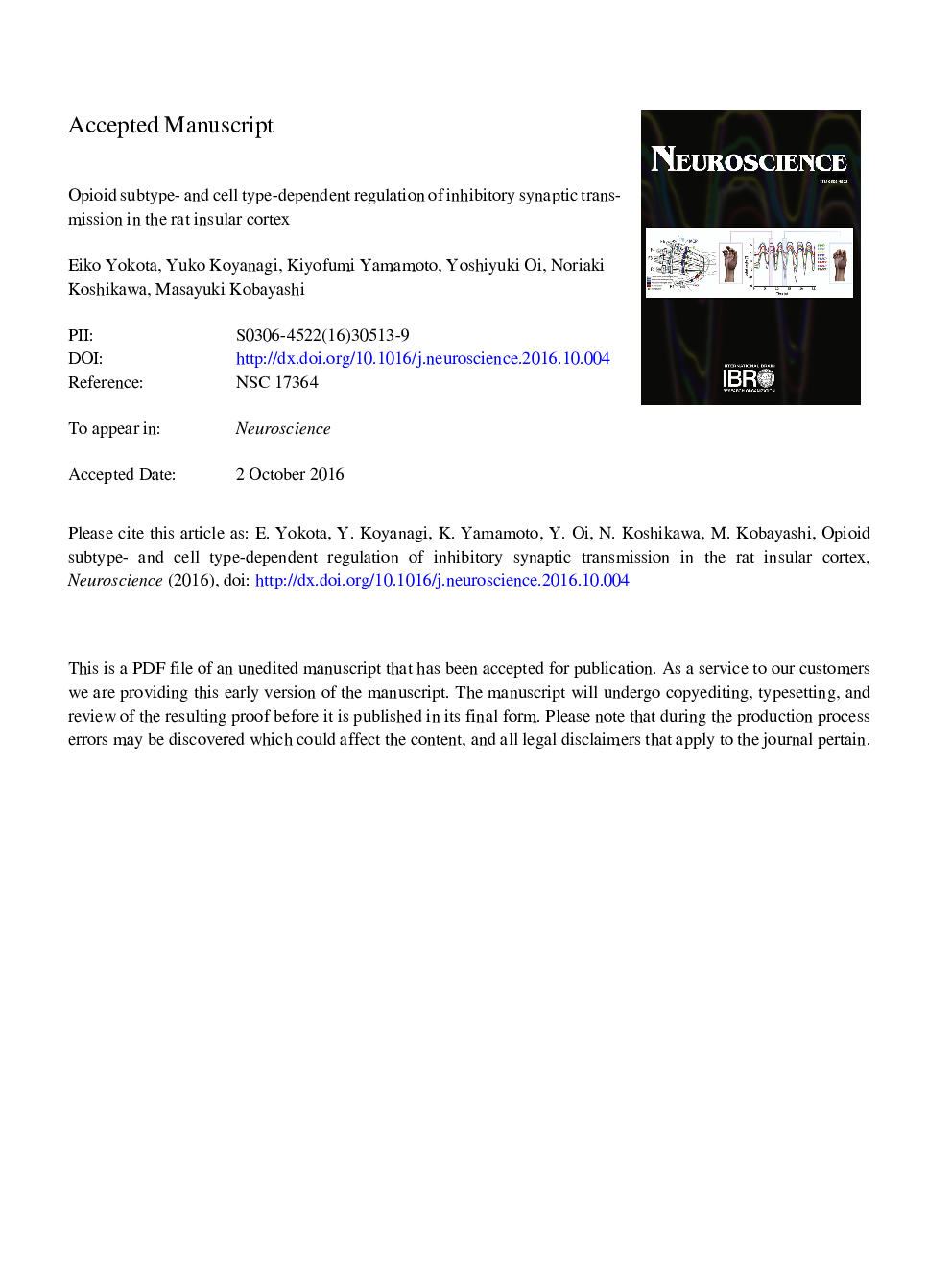| Article ID | Journal | Published Year | Pages | File Type |
|---|---|---|---|---|
| 6270680 | Neuroscience | 2016 | 39 Pages |
Abstract
The insular cortex (IC) plays a principal role in the regulation of pain processing. Although opioidergic agonists depress cortical excitatory synaptic transmission, little is known about opioidergic roles in inhibitory synaptic transmission. In the IC, the opioid receptors differentially regulate the excitatory propagation: agonists of the mu (MOR), delta (DOR), and kappa (KOR) exhibit suppressive, facilitative, and little effects, respectively. Thus, we aimed to examine the effects of opioid receptor agonists on unitary inhibitory postsynaptic currents (uIPSCs) in the IC. Pyramidal and GABAergic neurons in the rat IC were recorded by a multiple whole-cell patch-clamp technique. [D-Ala2,N-Me-Phe4,Gly5-ol]-Enkephalin acetate salt (DAMGO), an MOR agonist, reduced uIPSC amplitude by 74% in fast-spiking GABAergic interneuron (FS)âFS connections without a significant effect on FSâpyramidal cell (Pyr) connections. These effects of DAMGO were also observed in non-FSâFS and non-FSâPyr connections: DAMGO reduced the uIPSC amplitude in non-FSâFS but not in non-FSâPyr connections. DAMGO-induced depression of uIPSCs was blocked by the MOR antagonist, D-Phe-Cys-Tyr-D-Trp-Arg-Thr-Pen-Thr-NH2. The DOR agonist, [D-Pen2,5]-Enkephalin hydrate (DPDPE), reduced uIPSC amplitude by 39% in FSâFS and by 49% in FSâPyr connections, which was antagonized by the DOR antagonist, naltrindole. However, DPDPE had little effect on non-FSâFS/Pyr connections. (±)-trans-U-50488 methanesulfonate salt (U50488), a KOR agonist, had little effect on uIPSC in FSâFS/Pyr connections. These results suggest that MOR-induced uIPSC depression in FSâFS and non-FSâFS, but not FSâPyr and non-FSâPyr connections, results in the depression of excitatory propagation in the IC, which may be an underlying mechanism of the powerful analgesic effects of MOR agonists.
Keywords
Related Topics
Life Sciences
Neuroscience
Neuroscience (General)
Authors
Eiko Yokota, Yuko Koyanagi, Kiyofumi Yamamoto, Yoshiyuki Oi, Noriaki Koshikawa, Masayuki Kobayashi,
